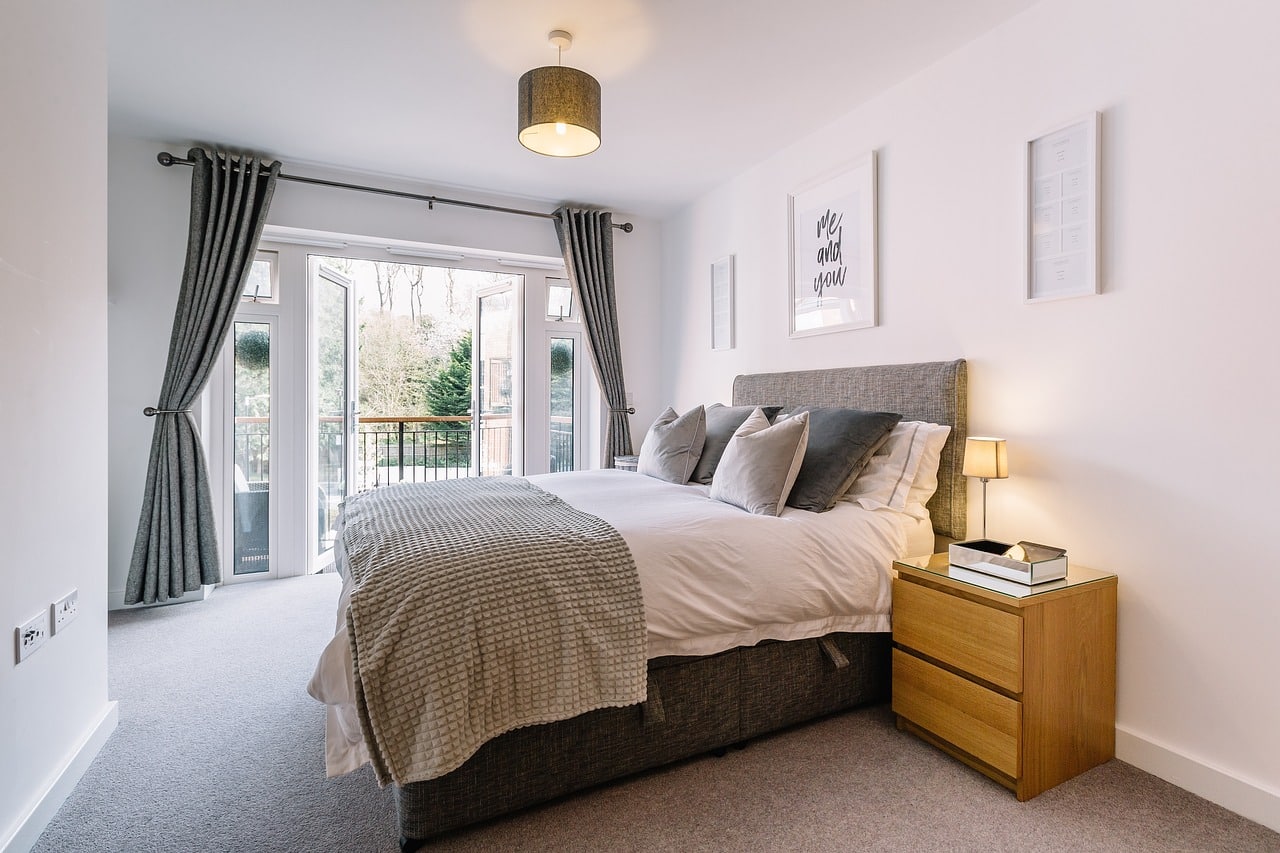Sleep is an integral part of our lives. It is the time when our body gets the rest it needs to function optimally. However, the quality of sleep you get can be heavily influenced by your bedroom environment. From the light and noise levels to the type of mattress you sleep on, every detail plays a pivotal role in determining how well you sleep. This article will delve into the science behind sleep and how you can design the perfect bedroom environment for optimal sleep.
The Role of Light in Sleep Quality
Light plays a crucial role in our sleep cycle. Our body’s internal clock, or circadian rhythm, responds to light cues, helping us stay awake during the day and sleep at night. However, modern life often disrupts these natural light cues, impacting our sleep quality.
Cela peut vous intéresser : Textile trends: choosing fabrics that speak to your style
Evening exposure to blue light—emitted by gadgets like smartphones and laptops—can hinder the production of melatonin, the hormone that prepares your body for sleep. Hence, it’s important to limit your exposure to such light sources before bedtime.
Conversely, a dark room can enhance your sleep quality. Using blackout curtains or an eye mask can help block out any disruptive light, signaling to your body that it’s time to sleep. A dim nightlight in the hallway or bathroom can assist in navigating during the night without disrupting your sleep too much.
Lire également : Balancing work and leisure: designing a multipurpose home office
Importance of a Good Mattress and Bed
The role of a good mattress and bed cannot be overstated in ensuring a good night’s sleep. A poor-quality mattress can lead to discomfort and frequent awakenings, causing disrupted sleep.
When considering a new mattress, prioritize personal comfort. Everyone’s preference for firmness varies, and what works best for one person may not work for another. An ideal mattress will support your body in a neutral position, one where your spine maintains its natural curvature and your head, shoulders, buttocks, and heels are aligned.
It’s also key to remember your bed frame. A good bed frame will support your mattress, provide stability, and extend the life of your mattress. An unstable bed frame can cause the mattress to sag, leading to discomfort.
Regulating Bedroom Temperature for Better Sleep
Your sleep environment’s temperature can significantly influence the speed at which you fall asleep and the quality of sleep you get. It’s been found that cooler temperatures can improve sleep quality by making it easier for your body to decrease its temperature, a necessary process for sleep onset.
The recommended temperature for optimal sleep is around 65 degrees Fahrenheit (18.3 degrees Celsius). While this may not be a one-size-fits-all solution, you can experiment with different temperatures to find what works best for you.
During the colder months, using breathable bed linens can help maintain a cooler sleep environment. Conversely, during warmer months, consider using fans or an air conditioner to help regulate your bedroom temperature.
Controlling Noise Levels for a Peaceful Sleep Environment
Noise can be a significant sleep disrupter. Even if you don’t fully wake up, noises can shift you into a lighter stage of sleep, impacting your sleep quality. Consistency of sound can also affect your sleep – the more constant the noise, the more likely you are to remain asleep.
White noise machines can be a helpful tool in creating a more soothing sleep environment. They produce a steady, unchanging sound, which can mask disruptive noises. There are various types of white noise machines available, ranging from those that produce ambient sounds of nature to those that generate a simple fan sound.
Earplugs can also be an effective solution for those dealing with inconsistent or loud noise environments.
Maintaining a Clean and Organized Bedroom
Lastly, maintaining a clean and organized bedroom can substantially improve your sleep quality. A clutter-free environment can help reduce anxiety and create a peaceful atmosphere conducive to sleep. Regular cleaning can also reduce allergens, improving sleep for those with allergies.
Moreover, try to associate your bedroom with sleep and relaxation only. That means keeping work materials, computers, and televisions out of the room. This helps your brain associate the bedroom with sleep and can make falling asleep easier.
In conclusion, understanding the science of sleep and the impact of your bedroom environment can empower you to make changes that improve your sleep quality. Remember, everyone is unique, and what works for one person may not work for another. It may take some trial and error to find the right balance for you. Regardless, improving your sleep environment is a positive step towards better sleep and, consequently, better health.
Optimizing Your Sleep Environment with the Right Colors and Decor
The choice of colors and decor in your bedroom can significantly influence your sleep quality. Different colors stimulate different responses in our brains, which can impact our mood and stress levels, and subsequently, our sleep quality. Moreover, a well-decorated room can create a calming environment, essential for a good night’s rest.
Cool, calming colors like blues, greens, and grays are often recommended for bedrooms. Studies suggest that people sleeping in rooms painted in these colors tend to get the best night’s sleep. These colors are associated with feelings of calmness and relaxation, which can help you unwind and prepare for sleep.
On the other hand, avoid bright or intense colors like red or bright yellow in your bedroom. These colors can stimulate brain activity, making it harder for you to fall asleep.
In terms of decor, aim for simplicity and minimalism. An uncluttered, organized environment is more conducive to relaxation and sleep. Also, consider incorporating elements of nature, such as houseplants or nature-themed artwork. Nature can have a calming effect and induce a sense of tranquility, promoting better sleep.
Incorporating Aromatherapy into Your Bedroom Environment
Aromatherapy, the practice of using essential oils for health benefits, can also be a useful tool in creating an optimal sleep environment. Certain scents like lavender, chamomile, and vetiver are known for their sleep-inducing properties.
Lavender, in particular, has been widely studied for its sleep-promoting effects. It’s shown to decrease heart rate and blood pressure, two key factors in the process of falling asleep. Incorporating lavender through essential oil diffusers, or pillow sprays can enhance your sleep quality.
Remember, though, while aromatherapy can be a helpful tool, it should be used as a complement to other sleep-promoting practices. Always ensure that the basics— a comfortable mattress, suitable temperature, and reduced noise and light levels— are in place first.
In Conclusion: Your Personalized Sleep Sanctuary
Understanding the science behind sleep and the role your bedroom environment plays in it can pave the way for improved sleep quality. From the right choice of color and decor to the strategic use of essential oils, every detail of your sleep environment matters. Be mindful of your exposure to blue light, the quality of your mattress and bed, the temperature and noise levels in your room, and the overall cleanliness and organization.
However, it’s essential to keep in mind that everyone is unique. What works best for one person might not yield the same results for another. Don’t be afraid to experiment, adjust, and fine-tune your environment until you find what works best for you. By crafting a personalized sleep sanctuary, you’re investing in better sleep, overall wellness, and in turn, a better quality of life.
As the National Center for Biotechnology Information suggests, sleep is vital to our health, providing essential rest that our bodies need to function optimally. So let’s prioritize it, not just by considering our sleep habits, but also by creating an ideal bedroom environment.
















